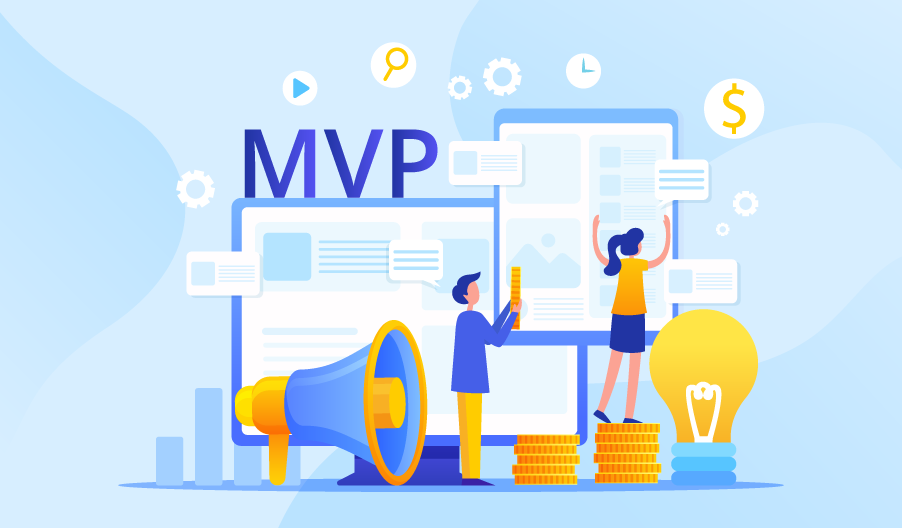What Is MVP In Software Development: A Comprehensive Guide
In today’s rapidly evolving tech landscape, staying ahead of the competition requires innovative approaches to software development. One such approach that has gained widespread recognition is the concept of Minimum Viable Product (MVP) in software development. As a foundational strategy, MVP plays a pivotal role in the successful launch and growth of software products. In this comprehensive guide, we’ll delve into the depths of MVP, its components, benefits, and why it’s a driving force behind successful software projects.
Introduction
MVP, short for “Minimum Viable Product,” is a fundamental concept in software development that encapsulates the core features and functionalities of a product while ensuring it is ready for market testing. This strategy allows developers to gather valuable user feedback early in the development cycle, enabling iterative improvements and reducing the risk of resource wastage on unnecessary features.
What Is MVP In Software Development?
MVP in software development is a strategy that focuses on creating a version of a product with the bare minimum features required for it to be functional and appealing to its target audience. The primary objective of an MVP is to validate the product idea, test assumptions, and collect user feedback in the real-world context.
The Key Components of MVP
Creating a successful MVP requires careful consideration of its key components:
1. Core Features Identification
The first step involves identifying the core features that address the primary pain points of the target users. These features should be essential for the product’s basic functionality.
2. Streamlined User Interface
A user-friendly interface is crucial for an MVP. It should be intuitive and provide a seamless experience to users interacting with the product.
3. Reliability and Stability
While an MVP might not include all the bells and whistles, it should be stable and reliable. Users should be able to perform tasks without encountering frequent bugs or crashes.
4. Data Collection Mechanism
Integrating analytics and data collection tools helps gather insights into user behavior, enabling informed decisions for further development.
5. Scalability Considerations
Although the initial version is minimal, the architecture should be designed with future scalability in mind to accommodate additional features as the product evolves.
Benefits of MVP in Software Development
MVP offers several compelling benefits that contribute to the success of software projects:
1. Faster Time-to-Market
By focusing on essential features, an MVP can be developed and launched more quickly, allowing businesses to seize market opportunities promptly.
2. Cost Efficiency
Developing a full-featured product from the start can be resource-intensive. MVP helps allocate resources efficiently by investing only in features that resonate with users.
3. Real User Feedback
MVP enables direct interaction with users, facilitating the collection of genuine feedback. This feedback guides improvements and ensures the final product aligns with user needs.
4. Risk Mitigation
Testing assumptions and gathering feedback early reduces the risk of building a product that doesn’t resonate with the target audience.
5. Iterative Development
MVP sets the stage for iterative development, allowing developers to make incremental improvements based on user feedback and changing market demands.
How Does MVP Drive Successful Software Projects?
MVP plays a crucial role in driving the success of software projects by offering a structured approach to development and launch:
- Idea Validation: MVP allows businesses to validate their product idea in the real market, reducing the chances of building a product that doesn’t meet user needs.
- Early Feedback: By releasing an MVP, developers receive feedback from actual users, enabling them to fine-tune the product for better user satisfaction.
- Resource Optimization: Focusing on core features prevents resource wastage on non-essential functionalities, leading to cost savings.
- Market Adaptation: MVP’s iterative approach enables businesses to adapt to changing market trends and user preferences quickly.
- Enhanced Marketing: A functional MVP can be used for marketing purposes, creating buzz and anticipation for the full product release.
FAQs About MVP in Software Development
Q: Is MVP suitable for all types of software products?
A: While MVP is beneficial for most software products, its suitability depends on the complexity and goals of the project. High-complexity projects may require a more comprehensive approach.
Q: How do I decide which features to include in the MVP?
A: Focus on features that directly address user pain points and provide core functionality. Conduct market research to identify the most crucial features.
Q: Can an MVP be monetized?
A: Yes, an MVP can be monetized by offering a basic version of the product to early adopters. This generates revenue while gathering user feedback for improvements.
Q: What happens after the MVP stage?
A: After the MVP stage, developers analyze user feedback and iteratively enhance the product based on insights gained. This leads to a more refined and feature-rich version.
Q: How does an MVP contribute to long-term success?
A: An MVP sets the foundation for a successful product by ensuring it meets user needs, reducing development risks, and enabling continuous improvements.
Q: Are there examples of successful products built using the MVP approach?
A: Yes, several successful products, such as Dropbox and Airbnb, started as MVPs. They listened to user feedback and iteratively expanded their offerings.
Conclusion
In the realm of software development, embracing the MVP strategy can be a game-changer. It not only expedites product launches but also empowers businesses to create products that genuinely resonate with their target audience. By focusing on core functionalities, soliciting user feedback, and iterating based on real-world insights, MVP paves the way for successful software projects that stand the test of time.
SOURCEBAE: HIRE JAVA DEVELOPER





